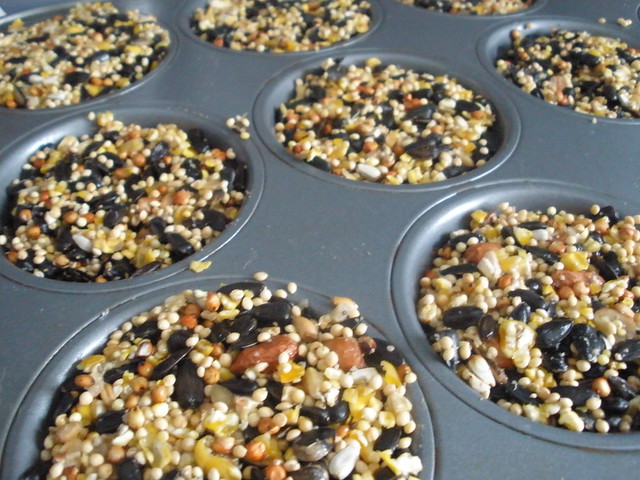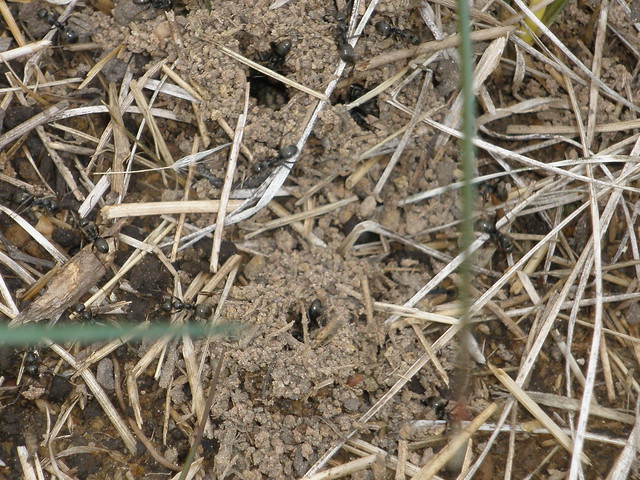So, we read pages 50-53 in The Handbook of Nature Study about pigeons. There was a lot of interesting information including the following things that we learned:
=> All of the domestic varieties of pigeons have been developed from the Rock pigeon, a wild species common in Europe and Asia.
=> The carrier pigeon was developed because of its usefulness; its love and devotion to its mate and young; and its homesickness when separated from them.
=> When a knight started off on a Crusade or to other wars, he took with him several pigeons from the home cote; and after riding many days he wrote a letter and tied it to the neck or under the wing of one of his birds, which he then set free, and it flew home with its message; later he would set free another in like manner. The drawback to this correspondence was that it went only in one direction. No bird from home brought messages of cheer to the wandering knight.
=> They are the only bird which can drink like a horse, that is, with the head lowered.
=> The walk of a pigeon is accompanied by a nodding as if the head were in some way attached to the feet.
=> When the bird walks, it sends waves of iridescent colors over the bird's plumage.
=> Both parents share the labors of incubating the eggs.
=> Rats, mice, weasels, and hawks are the chief enemies of the pigeons.
=> Since pigeons cannot fight, their only safety lies in flight.
Size & Shape
Larger and plumper than a mourning dove, rock pigeons are tubby birds with small heads and short legs. Their wings are broad and pointed; and the tail is rounded and wide.
In lieu of a current picture of pigeons to show their size, here's one from Japan taken in November 2003.
The pigeons flew up and landed on me.
I'm holding Olivia - who is about 10 months old -
she didn't seem bothered by them.
Maybe it's because they were on her back and
not near her face.
We were visiting a temple and there was a huge number of pigeons. They would fly up onto people and make themselves quite comfortable. It was unlike anything I had ever experienced. If I recall the experience correctly, people were feeding the birds and that's why they were so unafraid of humans.
Color Pattern
Variable in color, but most birds are bluish gray with a black tip on the tail. Most birds have iridescent throat feathers. Wing patterns may include two bars, dark spots, or can be plain.
Behavior
Pigeons often gather in flocks; and generally run or walk on the ground as they peck for food. When alarmed, the flock may suddenly fly into the air and circle several times before coming down again.
Habitat
Pigeons tend to congregate in cities and towns. They also can be seen in farmland and fields; and on rocky cliffs.
Intriguing Facts
Pigeons can find their way home, even if released from a distant location blindfolded. They can navigate by sensing the earth’s magnetic fields; and by using sound and smell. They can also use cues based on the position of the sun.
Egyptian hieroglyphics and Mesopotamian cuneiform tablets show that pigeons were domesticated more than 5,000 years ago. The birds have such a long history with humans that it's impossible to tell where the species' original range was located.
Pigeons depicted in Egypt.
Rock Pigeons carried messages for the U.S. Army Signal Corps during World War I and II, saving lives and providing vital strategic information.
Food
Pigeons eat seeds and fruits. Pigeons also readily eat food intentionally or unintentionally left by people, including bread crumbs and littered food.
Birdseed with gelatin hardening in muffin tins.
(Taken on December 18, 2010.)
Nesting
The clutch size is 1-3 white eggs; and pigeons can have anywhere from 1-6 broods per year. The incubation period is 18 days and nestling period is 25-32 days.
Nest Description
During nest building, the female sits on the nest and makes a flimsy platform of stems, straw, and sticks from materials brought to her one at a time by the male. Pigeons reuse their nests many times, and they don't carry away the feces of their nestlings the way many birds do. This means that over time the lightweight nest grows into a sturdy mound resembling a pot, and sometimes has unhatched eggs and mummies of dead nestlings.
Straw and other grasses...plus lots of ants.
(Taken on June 8, 2009.)
Building
Males often choose the nest site;and then sit and coo to attract a mate. The site is a cranny, nook, or ledge on either cliffs or human-made structures, often beneath an overhang or eaves. Pigeons may nest in stairwells, in rooms of abandoned buildings, or rain gutters.
Songs
The pigeon has different songs. To hear them, go here: Pigeon Songs
Backyard Tips
To attract pigeons, provide open areas where the birds can easily find food. Note that seed on the ground can attract rodents, so it’s best to provide only as much food as the pigeons can eat during their visit. Alternatively, offer grain (e.g., dried corn, peas, sorghum) on a platform feeder.
Outdoor Time
We had scheduled this nature study to be done by November 14th. However, with music lessons, play rehearsals, practicing at home for performances on top of homeschooling - we didn't do the nature study during the week scheduled.
As I looked back on photographs during that time period, there isn't one that I took of time we spent outdoors. Although there wasn't snow on the ground, it was quite chilly for November and we weren't ready for it. We ended up staying indoors with the exception of taking care of the horses and the girls swinging on their swings in the backyard.
Nature Journals
The girls each did a page in their nature journals about pigeons. Sophia's nature journal looks like this:
and Olivia's page about pigeons in her nature journal looks like this:
We used the Outdoor Hour Challenge - Gray Birds: Pigeons and Mockingbirds as inspiration.







1 comment:
Love that photo of you with the pigeons. I'm impressed you were so calm.
Post a Comment